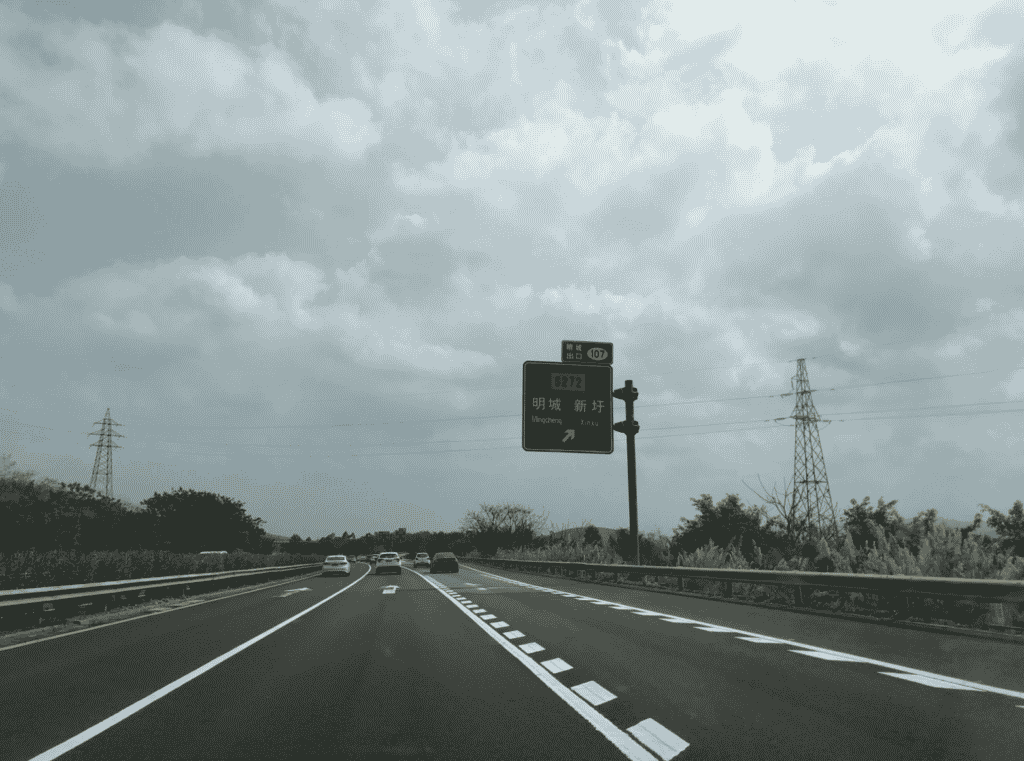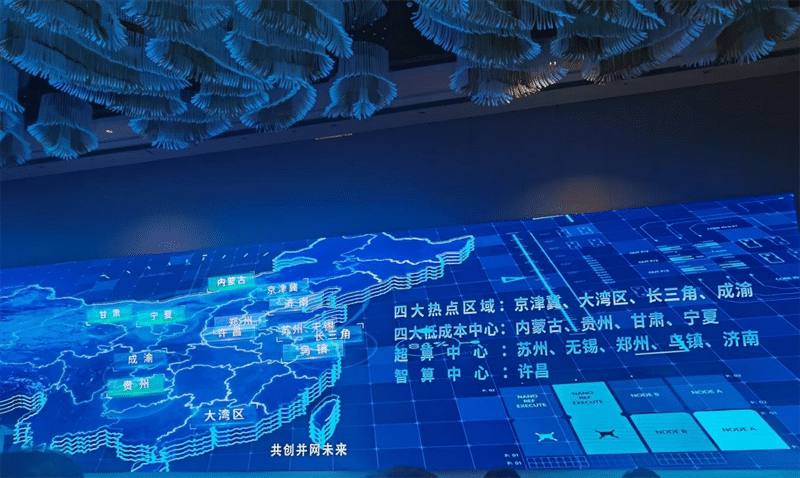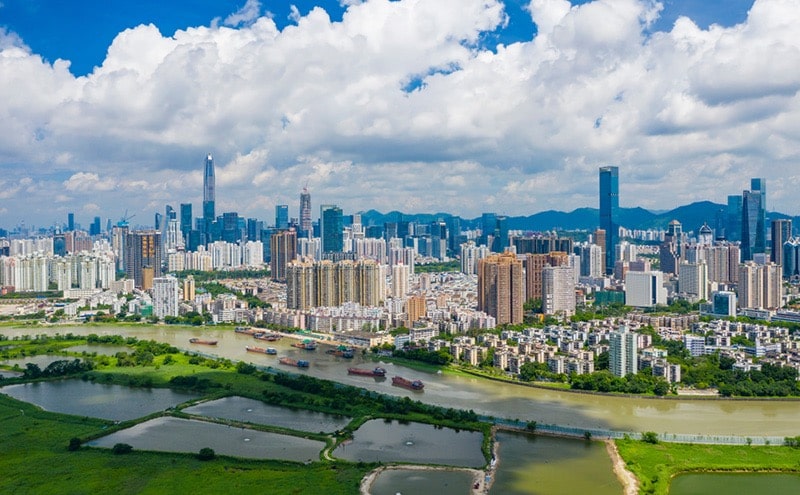The contradiction between China and Hong Kong continues to worsen, and the integration of the two places is aroused. Political issues must ultimately be resolved politically, and repairing the rifts will inevitably require a great reconciliation. The Guangdong-Hong Kong-Macao Greater Bay Area was included in the "Government Work Report" of the State Council. The Hong Kong-Macao Pearl River Delta urban agglomeration will develop collaboratively and take advantage of its geographical advantages to be on par with the economies of world-class bay areas such as the San Francisco Bay Area, New York Bay Area, and Tokyo Bay Area.
A number of large-scale cross-border infrastructure projects in Hong Kong will be completed in recent years. The hardware is sufficient but also requires software support. In the face of deep-seated contradictions, this article does not start from a political perspective, but hopes to use social and economic methods to overcome Hong Kong's internal resistance and enable Hong Kong to stand on the stage of international competition.
The San Francisco Bay Area is the pioneer of high-tech innovation, the New York Bay Area is the center of the global financial industry, and the Tokyo Bay Area is the base of advanced manufacturing. The Bay Area economy has both common characteristics and common problems. While becoming the core of the national economy, highly concentrated economic activities attract domestic and foreign investment, pushing up land prices and living costs. Hong Kong has a free and open market. With its status as a modern service industry hub, it is impossible for Hong Kong to be isolated from the agglomeration effect and the overall economic trend in the Guangdong-Hong Kong-Macao Greater Bay Area in the future.
It is well known that land prices in Hong Kong are high, but the property market problems in other Bay Area cities cannot be underestimated. In the "Global Property Affordability Survey" conducted by American consulting firm Demographia in the third quarter of 2016, Hong Kong was ranked the most difficult in the world for seven consecutive years, San Francisco was ranked ninth, New York was ranked 21st, and Tokyo was ranked 36th. . Frequent economic activities have also increased daily consumption levels. According to the Economist Intelligence Unit's 2017 Global Cost of Living Survey, Hong Kong's living expenses rank second highest in the world, followed by Tokyo fourth, New York ninth, and San Francisco third. twelve.
Deep integration tests endurance
Hong Kong and Macao have developed service industries. Whether the Hong Kong and Macao Special Administrative Region is seeking to develop the mainland market first, or Guangdong Province hopes to drive the industrial transformation of the Pearl River Delta, the integration of service industries will be the focus of mutually beneficial cooperation. Different from commodity trade, relaxing import and export controls and customs clearance facilitation are not the most important for the integration of the service industry. To achieve a high degree of liberalization in cross-border service trade, the flow of people must be strengthened. Close personnel exchanges will make the living environment more crowded. According to data from the Transport Department, Hong Kong's daily transit passengers have doubled from 350,000 in 2003 to 810,000 in 2016; the city's load capacity is tested in terms of port processing, transportation, accommodation and reception, and tourist facilities.
Thanks to the establishment of Asia-Pacific headquarters or regional offices by multinational companies, Chinese-funded institutions, and private enterprises, Hong Kong has already taken the shape of a regional CBD. In the process of developing the headquarters economy, high value-added links such as marketing, R&D and design, and financial services are retained locally, while processing and manufacturing are moved to other places. On the one hand, it accumulates funds, talents and technology for Hong Kong; on the other hand, it causes enterprises to compete with each other. The result is that business costs are getting higher and higher. According to data from the Rating and Valuation Department, the current rental growth rates for offices and retail spaces are three times higher than in 2003.
Unlike cooperation between other cities or states, Guangdong Province and the Hong Kong and Macao SARs have completely different political, social and legal systems, and the connection process will generate greater resistance than other Bay Area city clusters. Summarizing the experiences of different countries, relatively independent political systems are generally more resistant to regional integration. This is because the friction between the internal society and external political systems requires compromise on autonomy. It also faces competition from more professional talents and low-skilled labor, which challenges employment opportunities. ; It will also lead to uneven distribution of development results due to conflicts between business groups and salaried classes.
In 2013, there was what was called the largest anti-government demonstration in Singapore since the founding of the country. The reason behind it was to protest against the government's increase in immigration. Immigration is a socioeconomic issue. If the government cannot mitigate the negative impact of population policies, public grievances can only be expressed through political means. Many phenomena derived from the integration of China and Hong Kong, such as double non-infants, parallel traders, and independent travel, have also evolved from the socioeconomic level into political issues.
Urban expansion to cope with high land prices
Hong Kong must accommodate the economic benefits brought by the Guangdong-Hong Kong-Macao Greater Bay Area, and moderate expansion is a way to alleviate the crowding problem. However, the high-speed rail, the Hong Kong-Zhuhai-Macao Bridge and the Liantang Port will be completed in recent years. Construction of the airport's "three runs" has started since last year. The Huanggang Port will also be rebuilt by Shenzhen next year. It is believed that Hong Kong's demand for cross-border facilities will be greatly reduced in the short term. At the same time, the shortage and aging of construction workers are serious problems. The Construction Industry Council estimates that Hong Kong will be short of 10,000 to 15,000 skilled workers in the short to medium term. The average age of registered workers is now 46 years old. The conditions for Hong Kong to build large-scale infrastructure projects are also more complicated. difficulty.
Therefore, the focus of urban expansion is not to open up space, but to make full use of infrastructure projects that have been put into service one after another to divert economic activities and break through development bottlenecks. Take the Hong Kong-Zhuhai-Macao Bridge, which is expected to be completed by the end of this year, as an example. The exit of the bridge is close to airport transportation and land transportation. It focuses on logistics business and will help connect the flow of passengers and cargo on the east and west sides of the Pearl River. Together with AsiaWorld-Expo and the Airport Island North Business District, the Qiaotou economy is expected to develop into a North Lantau Corridor that integrates conventions, exhibitions, commerce and logistics.
The long-standing housing problem has been exacerbated by the Bay Area economy. Only the construction of additional public housing can meet the ardent housing demand. Public opinion often compares Singapore's HDB housing with Hong Kong's subsidized housing, pointing out that Hong Kong's population living in public housing is only 45%, which is far less than Singapore, which has more than 80%. Although there are structural differences in the policies of Singapore and Hong Kong, making direct comparison difficult, it is undeniable that the Singapore government has invested more resources to accommodate the new population, so it can formulate more aggressive measures when importing labor.
In order to cope with the record-high property prices, the pace of home ownership needs to be accelerated so that more citizens can become homeowners and enjoy the asset appreciation brought by high land prices. In addition to adding new residential units, the bureau can also consider expanding the scale of privatization of public housing to reduce the pressure on potential buyers from rising property prices. There are different options for specific plans. At present, many people are discussing locking the land premium to the level when they move in, and allowing residents to rent out units without land premium.
Integrate governance mechanisms to create a livable environment
Some Hong Kong people move to Guangdong Province and Macau to be close to their workplace, to take care of their loved ones, to improve their living space, to return to their hometowns for retirement, or for various personal reasons. Guangdong, Hong Kong and Macao have independent public service systems. Leaving your place of origin means losing medical, education, social security and other benefits. Some new immigrants are not adaptable to life in Hong Kong, so a return mechanism designed for one-way permit holders was put into trial last year. A few days ago, Shenzhen also announced that it will allow students from Hong Kong and Macao to enroll in Shenzhen schools to assist the return of single-Africa, dual-Africa and other cross-border students. From this point of view, the governments of the three places need to integrate an interoperable social governance system to create a livable environment and give citizens who are willing to leave Hong Kong an additional choice.
Generally speaking, it is difficult for public service agencies to relocate to other cities for operations. However, some public services adopt the "money follows the person" model and are the first to break geographical restrictions. The governments of Guangdong, Hong Kong and Macao can establish a registration system to facilitate citizens to enjoy public benefits and use mutually recognized service agencies in places other than their original place of residence. The Social Welfare Department's "Pension Plan" and "Guangdong Plan" already accept elderly people who have moved to the mainland to receive Comprehensive Social Security Assistance and Old Age Allowance. In the future, a pilot scheme can be implemented to select some clinics and schools to register with relevant departments, and Hong Kong people are welcome to use health care vouchers and school vouchers.
The government and the private sector need to work together to deepen cooperation and deal with socioeconomic issues as early as possible before they turn into political issues. At present, Guangdong-Hong Kong and Guangdong-Macao cooperation each have a joint meeting system, and Hong Kong-Macao cooperation also has a high-level meeting system. However, the above mechanisms rarely touch on common issues in Guangdong, Hong Kong and Macao, and basically operate independently. The Guangdong-Hong Kong and Hong Kong-Macao conferences are They were chaired by the Chief Secretary for Administration and the Financial Secretary respectively. To consolidate the cooperation model among the three governments in the long term, consideration should be given to establishing a unified regional governance and coordination mechanism to allow high-level government officials from Guangdong, Hong Kong and Macao to meet regularly to coordinate the entire development plan and resolve problems that may be faced during the cooperation process.
Cooperation projects proposed by the government involve public funds and are particularly sensitive. If civil society actively participates in economic and trade cooperation and cultural exchanges, it will bear less political pressure than if the government takes the initiative. The "Belt and Road" scholarship launched by the government last year has been controversial and has not received funding from the Legislative Council. In fact, some chambers of commerce, quasi-governmental organizations and civil society organizations also fund similar student exchanges, summer internships and incentive programs, and there is very little opposition. With the help of civil society, neighboring cities can be contacted more smoothly and friendly exchanges can be promoted.
Regional integration is both an opportunity and a challenge. The gathering of capital and people requires urban expansion and institutional integration to handle it. The global economic landscape is becoming more regionalized, and the Bay Area urban agglomeration is competing to become a geo-economic and trade center. The global situation is turbulent. Should we waste time entangled in political disputes, or should we seek the greatest common denominator and jointly create social and economic value? If Hong Kong wants to retain its core advantages on the international stage, it must not rest on its laurels. Instead, it must rise to the top, overcome internal resistance, build the Guangdong-Hong Kong-Macao Greater Bay Area, and seize a strategic position in regional development.
Pan Xuezhi is a research assistant at the Shanghai-Hong Kong Development Joint Institute of the Chinese University of Hong Kong.
Song Enrong is a visiting professor at the Department of Economics at the Chinese University of Hong Kong and deputy director of the Shanghai-Hong Kong Development Joint Research Institute



